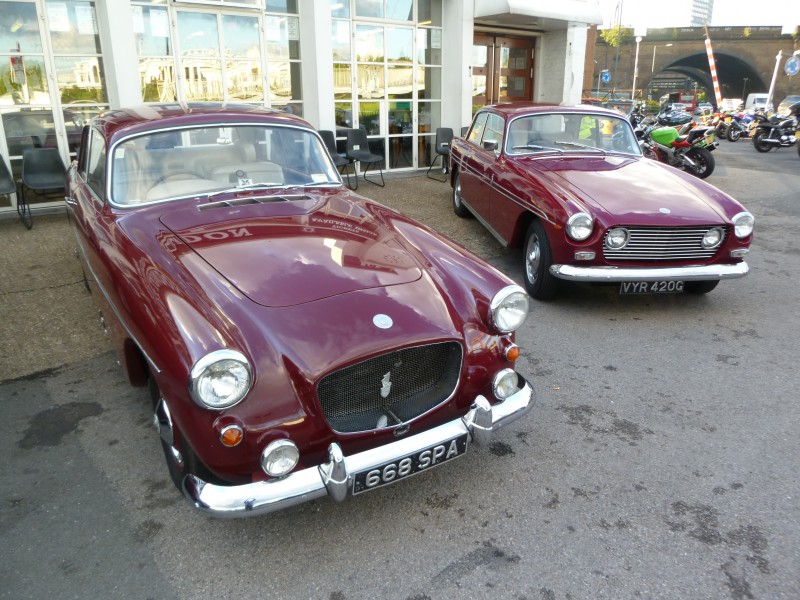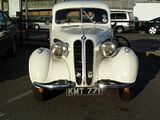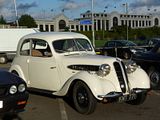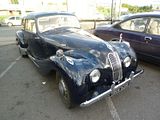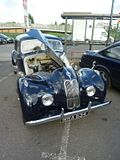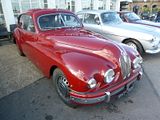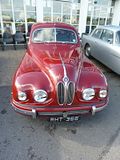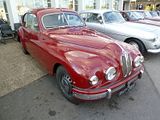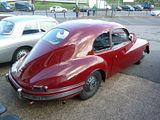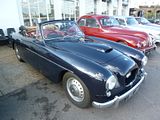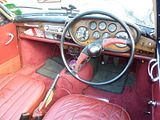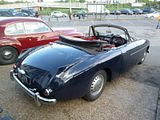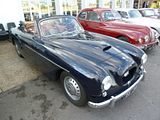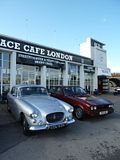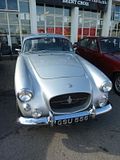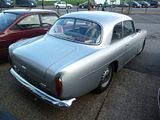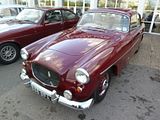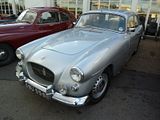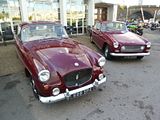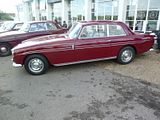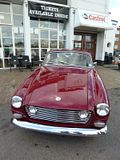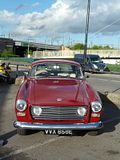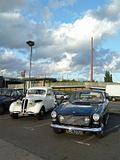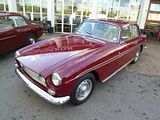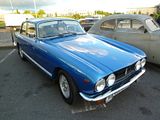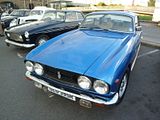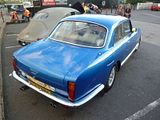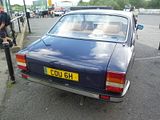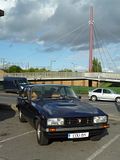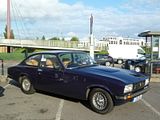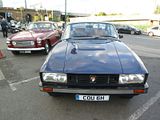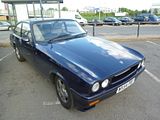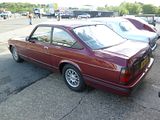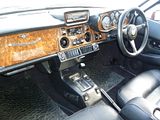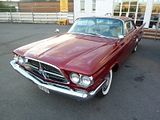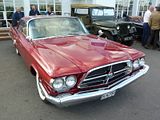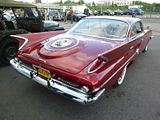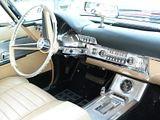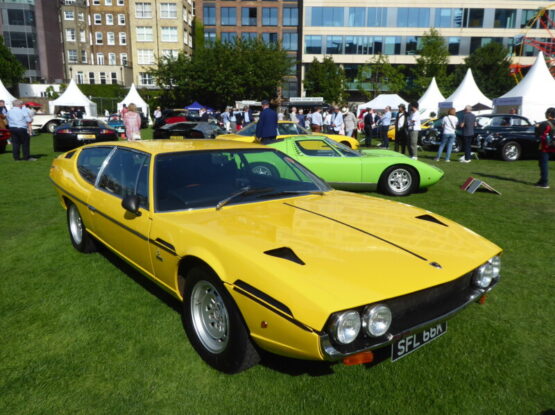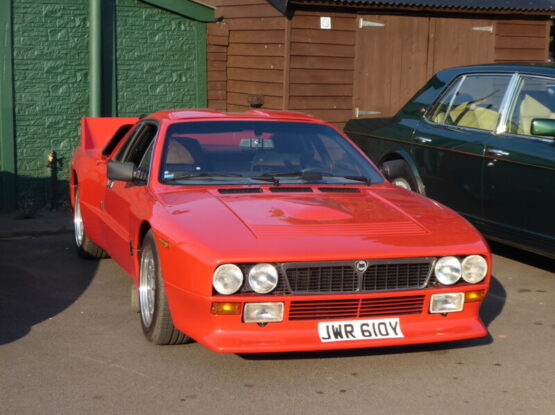When a last minute need, caused by quarter end sales pressures, forced my opponent reluctantly to have to cancel the planned squash game that was going to be my evening’s activity, I had set off for my hotel and then remembered seeing some publicity around an assembly of Bristol Cars at the famous Ace Cafe, to celebrate the 65th anniversary of the marque. It was a nice summer’s evening, and as seeing more than a couple of Bristol Cars at any event is something of a rare occurrence, I decided to divert up to the Ace to see what would turn up.
Oldest car at the event was not a Bristol. This is a 1939 Frazer-Nash BMW 321 One of 21 such cars that were sold in the UK in the months leading up to the second world war, it would have been a competitor to the Rileys of its day. Frazer Nash had the import concession for BMW in the UK both before and after the war, and made few changes to the BMWs they imported, apart from putting their name on the badge. The owner bought the car at the Beaulieu AutoJumble 30 years ago, and has looked after it ever since. He has managed to get some information about its past, though he did say that he had no idea what it would have cost when new. Why was is at the event? Well, as you will see, the linkage between Bristol and BMW is strong. The 2 litre engine in this car, which endowed with a top speed of a heady 78 mph, is the same basic unit as the one that was used by Bristol Cars when they launched their first car a few years later.
That first Bristol was the 400, and a surprising number of these cars, around 700, were produced, and remain around today. The genesis of this car is that HJ Aldington, a director of the Bristol Aeroplane Company (BAC) used his British Army connections, in affiliation with Frazer Nash, the pre-war concessionaire for BMW cars in the UK, to visit Munich several times in 1945, to investigate plans for making cars. BAC set up a car division and bought a controlling stake in Frazer Nash, It was only in 1960 when the original BAC Company merged with several other aircraft manufacturers to form the British Aircraft Company, which later became British Aerospace, that Bristol Cars became a separate entity. By this time, the manufacturing base at Filton, in Bristol, deeply embedded in what these days is Airbus was established. The fist car, the 400 was derived from pre-war BMW products, with a body based on the 327, and the engine and chassis having their origins in the 326 models, even retaining a variant of BMW’s trademark grille design.
In 1949, a new design, styled by Touring, first appeared, with the 401 model. With space for 5 people, and a more aerodynamic shape, the car was faster and established a niche for itself as a luxury grand tourer. Over the next few years, subtle modifications were made to the car, resulting in new derivatives being launched. 24 convertible cars were produced and these were called the 402. In 1953, the 403 model was launched, featuring changes to the engine, chassis, brakes and interior trim, but with a body style that looked very much like the 401. Both coupe models of this type that were at the event were the 403 cars.
The 405 was made between 1954 and 1958 in both four door form (297 cars) and 43 cars as a drophead coupe, and there was an example of the latter at the event.
The 406, still with a 2 litre engine, but with a completely different body style was launched in 1958. By 1961, pressure on Bristol to modernise was getting stronger, and the first imperative was to consider an automatic gearbox. The story goes that they talked to Chrysler to see if they could supply something suitable, and when an evaluation unit was shipped over, it arrived with an 5.2 litre V8 engine attached. Bristol tried the complete ensemble in the car, and concluded that this was what they needed to be able to compete against the Jaguars and Aston Martins of the day. It resulted in the launch of the 407.
Models 408 to 410 followed in the 1960s, with new styling on the 408 model and then subtle changes made to improve the cars. These are both 410 models, offered between 1966 and 1969.
The 411 was launched in 1969, and there are more of these cars than any other model type registered in the UK. As with its predecessors, this car used a Chrysler V8 engine, this time in 6.2 litre modified by Bristol, which endowed the car with better performance than its predecessors.
In the mid 1970s, Bristol felt the need for new designs, and turned to Zagato who came up with the slightly quirky 412. This was followed by the 603 saloon, a rebodied version of the long running 411 model. Two different models were offered, with a 5.2 and 5.9 litre V8 engine, with the smaller of the two tuned to run on 2 star petrol. The new body was more aerodynamic, and had more space inside it. By this time production of cars was no more than a couple a week, so these cars have always been a rare sighting. Updated in 1979 to an S2 model, the 5.9 litre engine became standard. For 1982, a more significant update was made, and what in effect was the S3 model was christened with a pair of iconic name from the aircraft making past, the Britannia and the Brigand. In this form, the car ran until 1993. Brigand was the more potent car, with a turbo charger added, to increase the available performance levels, making the car capable of 150 mph.
A further update to this basic body design, in 1993, resulted in the Blenheim, being the first model to have fuel injection. The person driving this one turned out to be Toby Silverton. I was told this by one of the other owners, but then a few minutes later, Toby came over, and introduced himself to me. We had a good chat, during which he told me to make sure that were ever stopped in Kensington to drop into the showroom, that although all the press reports about how in conjunction with the new owners of the company they will indeed explore an electric car, there are still owners who want machines with an 8 lire engine, so they will continue to produce “traditional” Bristols, and that production will resume shortly, initially with the Series VI, them the Roadster and finally the Fighter.
I mentioned the fact that a colleague who retired a couple of years ago had been (and indeed may still be) the owner of a pair of 407s and when he asked the name, he said that although he did not know the guy personally. he recognised it. He also told me that more than 40% of any Bristol that is over 30 years old has been exported at some point in its life, and that the cars are surprisingly popular in places like Germany and the Netherlands where right hand drive is a cachet rather than an impediment! l am sure we talked about other things and then he went over to talk to every single person that was there, whether they were Bristol owners or not. His enthusiasm for the marque, the company and its future was clear to see.
This Blenheim 2 was first registered in Ireland in 1998, and was brought over to the UK by its current owner about 6 years ago. Blenheim 2 was the first mode with a 4 speed automatic, which significantly improved the fuel consumption of the car. It was followed at the end of 199 by the Blenheim 3 car, which saw new tail lights and a different interior.
Slightly disappointingly, there were no examples of the most recent cars, such as the Fighter I had seen a blue one in the Kensington show room which I pass en route to Ace, and apparently there is a second example also in there at present.
This car arrived fairly early evening. The car park attendants went over to talk to the owner, and then, quite amusingly, they came over to me and the person I was talking to and asked us if we thought it should be allowed to park on site. We both said that for something quite so imposing, parking it on the street was not entirely appropriate, so although it was not really our call, if it were our decision to make, we would allow the driver in.
The car is a 1960 Chrysler 300F. There is a tenuous linkage with Bristol, as the engine is a close relative of the one that appeared in Bristol cars from 1961, though it is a larger capacity unit in this Chrysler. The owner has only had the car for three weeks, and it is clear that someone in its recent past has spent a lot of money on restoration work. So, quite the antithesis to the restrained world of Bristol. but by common consensus, a magnificent machine.
Maybe I did not quite burn off the calories on the squash court as planned, but this was a fascinating evening, with some rare machinery and interesting people.
2011-06-25 07:50:41

